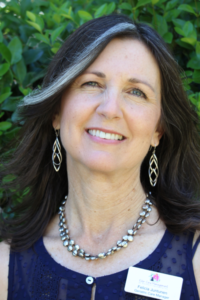Safety First…

by Felicia Juntunen, CMC, ECM Director of Care Management
The intersection of health and safety is a topic important to old and young alike. The environment of our homes and our habits therein impacts our safety and influences our health. As we age, the emphasis on safety intensifies, especially as physical health declines and senses like vision and hearing become impaired. According to the Centers for Disease Control and Prevention (CDC), falls are the leading cause of fatal and nonfatal injuries in adults 65 and older. A fall can lead to a cascade of events that cause irreversible change. Proactively implementing basic changes at home and in personal conduct can potentially prevent falls and other accidents.
Deciding how to modify a home environment to increase safety can be daunting. At Elder Care Management, client safety is a central part of our work. Assessing client safety is a natural part of our care managers’ contact with and service to clients. Because we meet clients where they live and spend most of their time, we can use our experience and expertise to evaluate and suggest changes in their home environment and personal safety. Modifications of home and habits can range from simple to complex. A relatively simple adaptation is the introduction of durable medical equipment, commonly referred to as “DME,” which are supplies or equipment needed to treat an illness or injury and generally covered by insurance. Some examples include a cane, walker, or wheelchair. Other types of equipment which may be especially useful, though may not be covered by insurance, include shower chairs, grab bars, and raised commode seats. The use of a shower bench could more than pay for itself if it prevents the user from falling while bathing. Wearing a medical alert device is another proactive decision that could mean the difference between getting help in an emergency or delaying treatment. Making thresholds passable with the installation of door ramps or widening doorways to accommodate a wheelchair are examples of more complex home modifications that enhance accessibility and safety.
Elder Care Management regularly refers to companies that specialize in safety enhancements: medical equipment suppliers, companies that provide personal alert devices, or contractors who focus on structural modifications in the home. A Care Manager often provides much needed insight to these other service providers to accomplish more effective and efficient use of safety services. We can assist with the proper selection of services and devices based on a client’s needs, abilities, and resources. Likewise, these trusted senior care partners sometimes refer to our services when they are assisting clients, recognizing that our holistic approach and advocacy across other aspects of a client’s health and well-being can be beneficial. As part of ongoing service to clients, our Care Managers provide regular reassessment for clients in relation to their environment, evaluate their safety and suggest further modifications. If cognitive decline is present, our Care Managers use their expertise and objectivity to evaluate if another setting may be safer for the client or if the home can be made safe to accommodate them. Increasing your safety quotient can be as easy as wearing properly fitting shoes and removing a few trip hazards in the main walkways of your home. Simple or complex, adjustments made to increase your safety quotient are a worthwhile effort.
![Elder Care Management [logo]](http://eldercm.com/wp-content/uploads/sites/261/2020/06/ECM-Horizontal-Logo-Color.png)